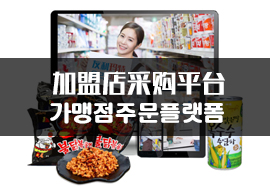
网站公告
more- Diyarbakır E... 25-05-04 17:37
- Diyarbakır E... 25-05-04 17:35
- Match44: A C... 25-05-04 17:08
- Escort Diyar... 25-05-04 16:40
Robot Or Human?
TashaDaly37945944 2025.05.02 23:56 查看 : 2
If the material is covered by greater than one CLH entrance (e.g. disodium tetraborate EC no. 215-540-4, is covered by 3 harmonisations: & colon; 005-011-00-4; 005-011-01-1 and 005-011-02-9), CLH details can not be shown in the InfoCard as the difference between the CLH classifications needs hand-operated analysis or confirmation.
One of the main purposes of NMN supplements is to improve NAD+ degrees in the body. Note that for readability objectives, just the pictograms, signal words and risk statements referred in more than 5% of the notices under CLP are displayed. This information is only presented if the substance is well-defined, its identity is not declared confidential and there is sufficient details available in ECHA's databases for ECHA's algorithms to create a molecular structure.
By attending to numerous characteristics of aging and sustaining the core pillars of health, How does apigenin work emerges as an effective substance for those aiming to optimize their health and wellness and durability. Apigenin: An effective bioflavonoid compound found in chamomile, known for its ability to support leisure and boost NAD+.
Harmonised classification and labelling is a legitimately binding category and labelling for a substance, concurred at European Community degree. The CLP Guideline uses the UN Global Harmonised System (GHS) and European Union Details Hazard Statements (EUH). Countless organic food include trace quantities of this encouraging particle.
The 'Hazard classification and labelling' area reveals the threats of a substance based upon the standard system of statements and pictograms developed under the CLP (Classification Labelling and Product Packaging) Guideline. This section is based on three sources for info (harmonised category and labelling (CLH), REACH enrollments and CLP notifications).
One of the main purposes of NMN supplements is to improve NAD+ degrees in the body. Note that for readability objectives, just the pictograms, signal words and risk statements referred in more than 5% of the notices under CLP are displayed. This information is only presented if the substance is well-defined, its identity is not declared confidential and there is sufficient details available in ECHA's databases for ECHA's algorithms to create a molecular structure.
By attending to numerous characteristics of aging and sustaining the core pillars of health, How does apigenin work emerges as an effective substance for those aiming to optimize their health and wellness and durability. Apigenin: An effective bioflavonoid compound found in chamomile, known for its ability to support leisure and boost NAD+.
Harmonised classification and labelling is a legitimately binding category and labelling for a substance, concurred at European Community degree. The CLP Guideline uses the UN Global Harmonised System (GHS) and European Union Details Hazard Statements (EUH). Countless organic food include trace quantities of this encouraging particle.
The 'Hazard classification and labelling' area reveals the threats of a substance based upon the standard system of statements and pictograms developed under the CLP (Classification Labelling and Product Packaging) Guideline. This section is based on three sources for info (harmonised category and labelling (CLH), REACH enrollments and CLP notifications).
?? 0
Copyright © youlimart.com All Rights Reserved.鲁ICP备18045292号-2 鲁公网安备 37021402000770号

